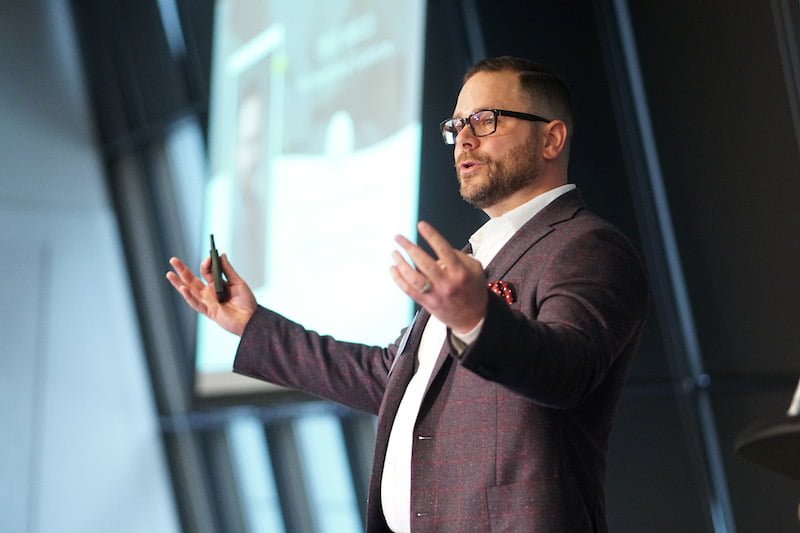Have you heard of conscious consumerism? If you answered no, it’s only a matter of time before you will.
In short, conscious consumerism affects how today’s shoppers make purchases and interact with brands. You might wonder, why talk about this on the Sponsorship Collective? That’s simple.
Since conscious consumerism has people carefully considering the brands and products they use in their lives, it’s going to have a trickle-down effect in sponsorship, affecting activations and how consumers interact with them.
As a sponsorship seeker, you must have your finger on the pulse of consumer behavior. After all, you might propose a high-scale activation to a sponsor, who might agree with your proposal and even pay you.
However, if your sponsorship opportunity underperforms because of a disengaged audience, you will lose the possibility of a future working relationship.
So, keeping that in mind, join me on this fascinating journey into conscious consumerism and what it means for the future of sponsorship.
What Is Conscious Consumerism?
Okay, so first of all, what in the world is conscious consumerism?
It goes by several names, including green or ethical consumerism, which should indicate what it’s about. It’s a means of purchasing products and services in a way that creates a positive economic, environmental, and social benefit.
Granted, conscious consumerism isn’t new. It’s been around since the 1970s, but back then, it was much more passive. In fact, it’s continued its passivity over the decades until the environmental impacts of global warming have begun being more deeply felt.
That brings us to today. Conscious consumerism is running rampant. Of course, it’s not solely about the environment, although that is a major contributing factor. COVID-19 has also changed the way the average consumer shops, as has today’s digital age.
It used to be that people could only rely on the materials and information on the label before deciding which products to buy. Then, as the internet and social media came about, more information on any given consumer product became available.
Today’s consumers have access to more information than ever. They can read reviews, watch YouTube unboxings, and sometimes even try a product for a limited time before buying.
That’s made it easier to buy than ever before, but with a more conscious edge.
The other factor that makes up the perfect storm of conscious consumerism is the buying generation. Today, Gen Z has more shopping sway, and what they say goes.
According to branding service Voyado, Gen Z is big on passion, with 77 percent acting on a cause they felt strongly about. They also listen to influencers big-time, as 65 percent have purchased a product or service after an influencer talked it up.
Gen Z is also not afraid to kick a brand to the curb, with 23 percent of them admitting to having boycotted a brand.
Oh, and on top of that, they favor sustainability, tying conscious consumerism back to being good for the planet.
The Impact of Conscious Consumerism on Sponsorship Activations
Now that you better understand the basics of conscious consumerism, let’s talk about its effect on sponsorship.
With Gen Z leading the charge in annual consumer spending, it’s obvious that the driving force most of them believe in–such as conscious consumerism–isn’t going anywhere.
Time has also proven that, with conscious consumerism getting its start some 40-odd years ago and now gaining steam with each year. People have better awareness and information than ever before, allowing them to be more selective about what they put on and in their bodies.
As a sponsorship seeker, you have to be the one to bear the conscious consumerism torch. The companies you partner with might not be as privy to this trend as you are, but that’s okay. You can educate them about why you’re making the decisions you have, especially if you have a primarily Gen Z audience.
Even if you don’t, be aware that Gen Z is everywhere. Lavish displays of spending can win their distaste, potentially leading to negative press or even a boycott of your brand.
What Can You Do to Make Sponsorship Opportunities More Consumer-Conscious?
As your sponsorship opportunities begin playing out, ensure that you follow these pillars of conscious consumerism moving forward.
Select Affordable Price Points
While Gen Zers might be the biggest spenders, they aren’t shelling out as relentlessly as past generations. That’s due to watching their parents grow up faced with the consequences of the 2008 economic recession (does that make you feel old yet?).
According to Porch Media Group, which deduced which generation spends the most, they found that the average amount of spending per transaction among generations is near its lowest with Gen Z.
On average, they spend $58.30 per transaction, with only millennials spending less ($54.91).
By comparison, Gen X spends $60.36 per transaction, boomers (between 55 and 75 years old) $61.69, and those over 76 years old $60.38.
Now, I know what you’re thinking. “But Chris, what if my audience isn’t primarily Gen Z?” They may be the most outspoken part of the conscious consumerism movement but are far from alone. Older and younger generations are joining the charge, so it helps to be aware of all their spending behaviors.
This data also indicates that younger generations are spending less per transaction than older generations, which is why it might behoove you to reduce prices on products and services available at an event.
Even if you have a primarily older audience, they’ll always appreciate the reduced prices. They might feel more inclined to spend more during your event.
Go Green
Sustainability is the heart and soul of conscious consumerism. Also, let’s be real, it extends beyond that. Everyone is preoccupied with doing their part for a healthier environment and greener planet, and that starts with sustainability.
There are many ways to incorporate sustainability into a sponsorship opportunity, which I’ve discussed elsewhere on the blog. For example, you can be more selective in the sponsors you choose, working with partners who have similar environmental beliefs and aspirations as you.
You should also choose more sustainable venues when possible and make greener choices in your event where you can. Instead of using single-use plastic cutlery, for instance, favor reusable options. Choose biodegradable paper straws instead of plastic.
Setting eco-friendly goals, including shorter- and longer-term plans, then following through will go a long way toward building trust with your audience that you’re serious about going green.
Scale Down
Remember, the excesses of money aren’t as impressive to today’s generations as they once were. Scaling up activations purely to do so, especially if you’re otherwise throwing an eco-friendly event, spits in the face of every other green initiative you’ve launched.
You don’t want to create this kind of dichotomy. If you’re about sustainability and doing what’s right for the planet, then your activations shouldn’t be all about how large, expensive, and flashy they are.
Instead, they should be environmentally friendly where and when possible and cost only as much as required to fulfill your sponsor’s and audience’s needs.
Be Transparent About Your Supply Chain
Transparency is exceedingly important in conscious consumerism, especially from an environmental standpoint.
Supply chains can cause a lot of negative environmental effects, so reduce those as much as possible, and begin presenting an honest view into what your supply chain looks like and what you aspire it to be. Having this kind of information front and center appeals to conscious consumers who want to feel good about supporting brands.
Ultimately, your sponsor should be on board with these green initiatives as well, as you’re trying to guide your audience toward them.
Connect with Influencers
Remembering that the bulk of conscious consumers are Gen Z, who are heavily into influencers, it doesn’t hurt to get an influencer on your side. Having a trusted party who vouches for you can raise more awareness of your event and drive up attendance, helping you achieve more outcomes for your sponsor.
Give Back
The last way to appeal to conscious consumers with your sponsorship opportunity is to give back where you can. This doesn’t always have to be monetarily.
For example, the other day, I was reading about a Canadian distillery that plants one tree when customers stop into the shop and make a purchase. They’ve planted something like 6,000 trees, no small feat!
That’s giving back in a way that matters to today’s consumers. However, be genuine in your initiatives, as the average consumer can tell when you aren’t.
Wrapping Up
Conscious consumerism is taking over. This trend that began in the ‘70s has become a movement in the 2020s as the planet continues to experience the previously unimaginable effects of global warming.
And yes, conscious consumerism very much affects your sponsorship endeavors, especially if your products or services appeal primarily to a younger crowd. Doing your part to connect with today’s conscious consumer means honesty, transparency, and a commitment to doing what’s right for the planet.
With the number of conscious consumers growing, it’s either do that or be left behind.
- About the Author
- Latest Posts
Chris Baylis is the Founder and Editor-in-Chief of The Sponsorship Collective.
After spending several years in the field as a sponsorship professional and consultant, Chris now spends his time working with clients to help them understand their audiences, build activations that sponsors want, apply market values to their assets and build strategies that drive sales.
Read More about Chris Baylis



